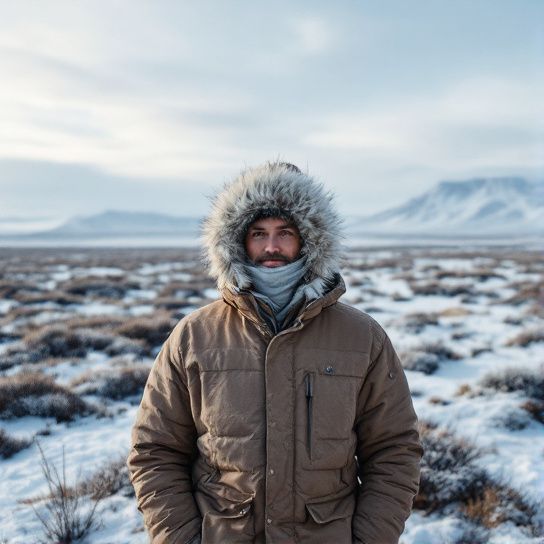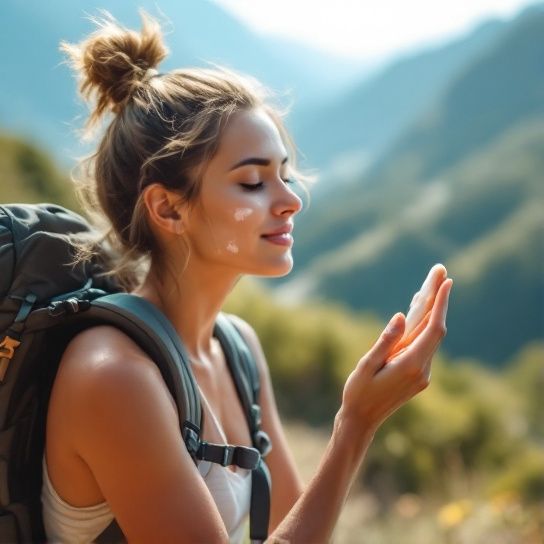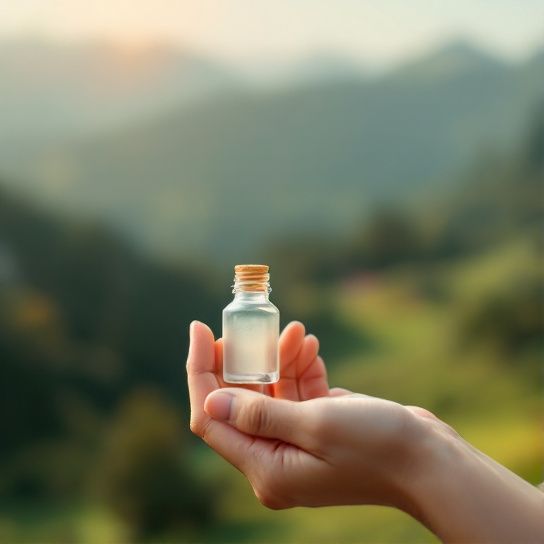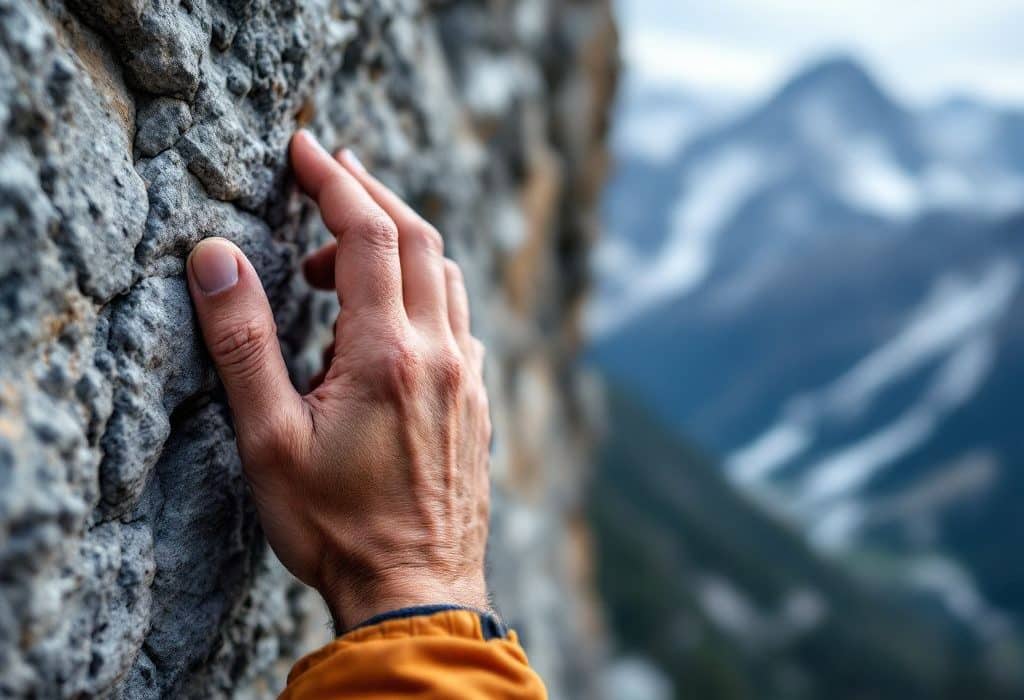Hey fellow rock climbing enthusiasts! Have you ever been mid-climb and just felt your fingers scream at you to stop? Trust me, I’ve been there—halfway up a route, desperately trying to get a better grip on a hold, only to have sweat, rough skin, or painful cracks get in the way. It’s a bummer, right? But here’s the thing: rock climbing skin care is a real game-changer. If you treat your hands right, they’ll thank you by gripping those rocks or gym holds just the way you want. Today, let’s dive into some natural skincare strategies to protect and pamper your climbing grip.
Why Rock Climbing Skin Care is Essential
When you’re climbing, your skin has a big job: keeping that all-important connection between you and the climbing surface. But climb after climb, whether on real rock or gym walls, your skin takes a hit. So why should you care about skincare for climbing? Well, a well-maintained grip can make the difference between sticking a tricky move and slipping off, not to mention keeping your climbing adventures as pain-free as possible.
The Deal with Calluses: Friends or Foes?
Let’s talk about calluses—you love ‘em, you hate ‘em. Calluses are your skin’s natural way of toughening up and getting ready for action. But too much of a good thing can become, well, not so great. Excessive callus build-up can lead to cracking, which is not only painful but also reduces your gripping power. Keep your calluses in check with a careful maintenance routine, and they’ll work with you, not against you.
Building a Skincare Routine for Climbing
Alright, let’s get practical. Creating a rock-solid skincare routine is like having a secret weapon up that chalk-covered sleeve of yours. A few small tweaks can make a huge difference. Let me walk you through a tried-and-true routine that incorporates natural skincare techniques to help you out.
1. Hydration Matters

First up, let’s chat about moisture. Not the moisture that makes things slippery—that’s where chalk comes in—but the kind that keeps your skin healthy. Dry, cracked skin isn’t only uncomfortable, but it can split during a climb, which is a no-go. Drink plenty of water (yeah, it’s a no-brainer) and opt for a natural hand balm. Look for ingredients like shea butter or beeswax which are climbing skin-friendly! Apply it every evening so your skin has time to absorb all that goodness overnight.
2. A Little TLC for Those Calluses
Next on our agenda: callus care. You don’t have to go crazy with the pumice stone, but a light, regular filing will help keep things smooth. Personally, I love using a natural pumice stone a couple of times a week. Just give your hands a good soak in soapy water first to soften things up, and gently work on any particularly rough areas.
3. Cuticle Care Isn’t Just for Manicures
Yeah, I said it—climbers should care about their cuticles. Dry, ragged cuticles can cause painful hangnails, and nobody wants that ruining their grip game. Keep them in check with a natural cuticle oil. Whether you go for something simple, like olive oil, or a specialized product from the climbing store, it’ll do wonders for your digits.
4. Weather-Wise Hands
Don’t forget the climate! Cold, windy days can dry your skin out faster than a good boulder problem sucks away energy. When you’re climbing outdoors and it’s chilly, protect your hands with gloves in between climbs. On the flip side, if it’s hot and humid, make sure you’re using chalk wisely to help manage sweat while protecting your grip.
Climbing Without Chalk? Yes, It’s Possible!
Speaking of chalk, let’s consider climbing options that might not rely heavily on the dusty stuff. With an effective skincare routine, you may find less need to embrace every opportunity for a chalk-up. Less chalk means fewer chemicals on your skin, and utilizing natural skincare routines, you’ll find those fingers possibly needing less drying churn. That being said, here are a couple of ideas to try transitioning into less chalk-heavy climbing:
- Better Conditioned Grip: Notice your grip improving over time as your skin health recovers and strengthens.
- Strategic Chalk Use: Rather than a habitual dip into the chalk bag, climb a few holds further without it. Limit chalking to when it’s truly necessary.
Friendly Reminders for Every Climber

It’s just as important to listen to your body as it is the latest beta you’ve got from your buddy. Make these routine checks a habit:
- Inspect: Regularly give your skin a once-over. Noticing cracks, unusual redness, or too much toughness? Adjust the routine.
- Balance: Equally as crucial as developing calluses is maintaining supple, moisture-locking hand care.
- Rest: Don’t underestimate the power of a smooth, healthy hand game due to proper recovery days. Respect your limits and let healing do its thing.
Soothing Techniques for Post-Climb Recovery
If your hands still feel raw at the end of a gripping climbing session, consider adding in some after-care to soothe and support recovery.
- Cool Down and Soothe: Rinse your hands in cool water and consider an ice bath if needed.
- Apply a Natural Balm: Make it a nightly ritual post-climb.
- Stretch and Relax Your Hands: Yes, just like muscles, stretching can encourage return to normalcy post-activity.
Common Mistakes in Climbing Skin Care

There’s some room for a learning curve here, knowing that your grip care should grow with you. Just starting out? Watch out for these missteps:
- Ignoring Your Skin After Climbs: Essential downtime for skin is just as much a part of post-workout care as resting your muscles. Avoid turning climbing wear into permanent issues or injuries through neglect.
- Overdoing the Callus Buff: Yeah, it’s tempting to file down those lumps completely smooth, but we really do need them. Balance is key!
- Thinking Gloves Are Just for Show: Whether shielding from damaging cold or gritty dirt, light gloves are your skin’s biggest campaign for protection.
In Summary: Keep Those Hands Happy
Creating a long and beautiful relationship with climbing? Let your hands lead the charge with hearty, intentional care. Our ever-reliable bodies deserve some TLC for helping us conquer vertical challenges! We’re talking about rethinking climbing skin routines; engage daily hydration, sensible callus management, and targeted climbing skin treatments — and less reliance on chalk.
Next Steps
Try out some of these tips and see what works best for your unique hands. Don’t be afraid to experiment—you might find that perfect balance quicker than you think, and trust me, your climbs will thank you. Now go out there and slay some climbs with your new and improved grip!
Frequently Asked Questions
What are the benefits of using natural skincare products?
Natural skincare products offer several benefits, including hydration, nourishment, healing, and protection for the skin. They are free from harmful chemicals and parabens, making them gentler and less irritating, especially for sensitive skin. Natural ingredients like aloe vera, chamomile, and lavender provide gentle cleansing, hydration, and protection. Additionally, these products have a low environmental impact as they are biodegradable and do not contain synthetic additives[1][3][5>.
How do natural skincare products help with anti-aging?
Natural skincare products contain ingredients like aloe vera, jojoba oil, green tea, and rosehip oil that help protect the skin from aging. These ingredients are rich in antioxidants and vitamins, which nourish and hydrate the skin, reducing signs of aging such as wrinkles and fine lines. Unlike synthetic products, natural ingredients work in harmony with the skin to prevent premature aging without exposing the skin to harmful chemicals[1][3][5>.
What are the anti-inflammatory effects of natural skincare products?
Natural skincare products often include ingredients with anti-inflammatory properties, such as aloe vera, chamomile, and green tea. These ingredients help soothe and calm irritated skin, reducing redness, puffiness, and other signs of inflammation. This makes natural skincare particularly beneficial for those with sensitive or allergy-prone skin[1][3][5>.
Are natural skincare products eco-friendly?
Yes, natural skincare products are generally eco-friendly. They are made from natural ingredients that are biodegradable and do not contain synthetic additives that can harm the environment. These products do not leave chemical residues in the environment and do not pollute soil or water when washed down drains, making them a sustainable choice[1][3][5>.
References

